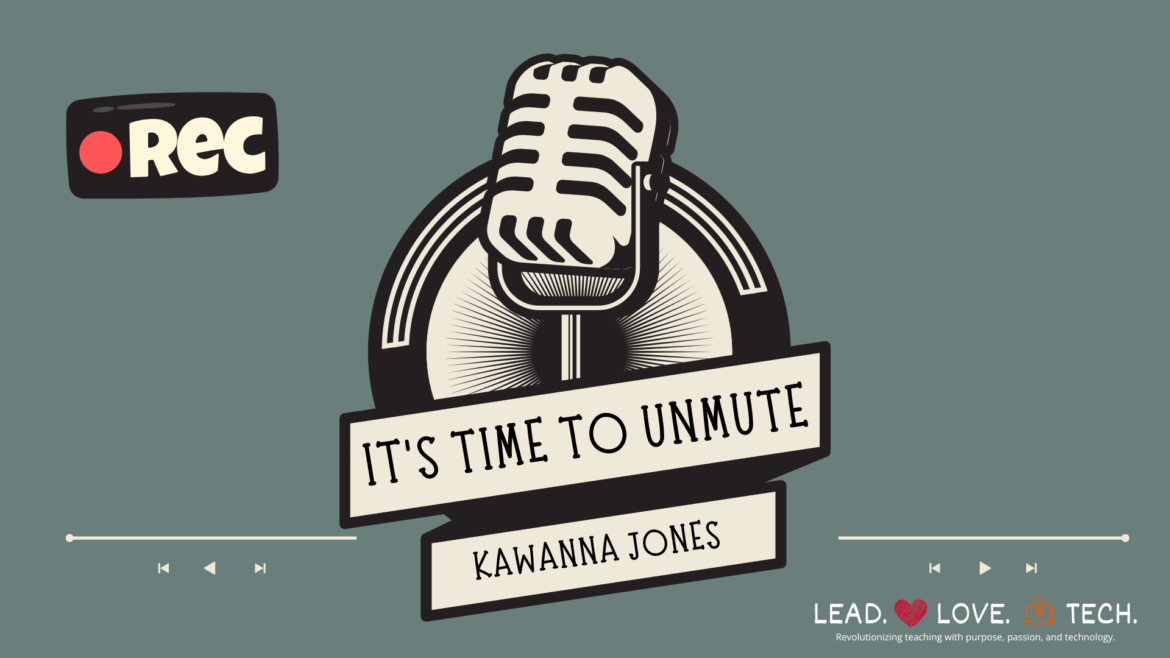After the remote learning of the early 2020s, schools reopened with detailed plans that included sanitizing, distancing, and logistics. But one thing was missing from every checklist: our students’ voices. We focused on how they would safely return to buildings, but not on how they would meaningfully engage with the content and with each other. What began as muted mics on Zoom and Google Meet slowly morphed into a troubling norm of muted classrooms. Teachers were quiet, and so were the students. Since then, many classrooms have remained trapped in this silent cycle of passively receiving an assignment, clicking “Turn In” (or not), then drifting to YouTube, TikTok, or their own camera reels. This cycle has only strengthened a silence that limits mastery. But it’s time now to unmute and bring back those voices that drive learning in our classrooms and districts.
The Missing Piece
When we create our 90-day plans, design school improvement plans, and set SMART goals, there is one priority we cannot continue to overlook: student voice in the classroom. When students talk, whether they think out loud, question, or debate, they are doing more than just participating. They are learning. They are making connections. They are taking ownership.
Voice builds confidence, strengthens comprehension, and makes learning stick in ways that silence simply cannot. Our improvement plans filled with goals to “close achievement gaps” and “increase test scores” tell only part of the story. What we type in those documents truly comes alive when we keep in mind who we are writing those goals for: our students. And when we give them agency and amplify their voices, we transform their engagement into those measurable outcomes.
So, where do we start?
The answer lies in simplicity. We start with small strategies that create a big impact.
Start with one bold question.
Start class with a bold question that sparks curiosity about your lesson. Try something like “What’s one thing in the world that will fall apart without math?” Remind your students that there is no right or wrong answer and allow them the silence to think. When a student responds, become their coach, not their critic. Stay supportive and curious with phrases like: “Can you explain that a little more?” To take it further, bring in peers: “Did anyone hear anything they agreed with?” And finally, bring it home by bridging their thinking into the lesson: “This connects to our topic of the day because…” One question can be the spark that lights up the voices throughout your classroom.
Build one meaningful connection.
You often see your students in other areas, such as the cafeteria, hallway, or library. Keep your eyes open for these opportunities. If you catch your student in the library and the book they are reading just happened to be about animals, take a few seconds to learn what interests them. Later, when you are teaching about biomes, weave in their interest with a subtle acknowledgement from that moment in the library. These small gestures send a small message: “I see you. You belong in this learning.”
Create one safe space to speak.
Not every student wants the spotlight, but every single one deserves to be heard. Creating a safe space does not mean that everyone has to speak out loud or that they are in a silent corner. Sometimes, it means access to a digital dashboard where everyone can show up without pressure. Padlet is one example. It allows everyone to post, even anonymously. So the quietest kid still gets to be an active part of the conversation and still gets to be acknowledged.
Meet every voice where it lives.
Here’s a crucial step: once students start talking, we must be ready to listen to them and hear them on their own terms. Some speak loudly, others whisper, and some speak another language. Our job is to use every tool (text-to-speech, translation, visual supports) whatever it takes to bring every voice into the conversation. The classroom tools that we choose must be intentionally inclusive, accessible, and designed to amplify student expression.
Let’s make some noise.
It’s time to unmute more than microphones. We need to unmute their minds, their confidence, and their daily learning experiences. If we’re preparing students to thrive beyond the classroom, then we must give them room to speak up, space to grow, and the belief that their voice matters.
Yes, they come to school every single day, but what do they leave with? Knowing how to beat the next level to their game because they watched the YouTube tutorials most of the day? Or are they leaving as confident contributors and creators of meaningful learning experiences that took place in their classroom? Let’s design instruction overflowing with connection, collaboration, and conversation.
Unmuting isn’t a shiny new strategy to try when you have extra time. It’s a stand: a stand for equity, a stand for engagement, a stand for every learner, every single day. So, the question is not whether your students have something valuable to add to their learning- of course they do. The question is: are you ready to create the conditions where their voices can flourish?
It’s time to turn up the volume on the voices that drive learning. It’s time to unmute.

